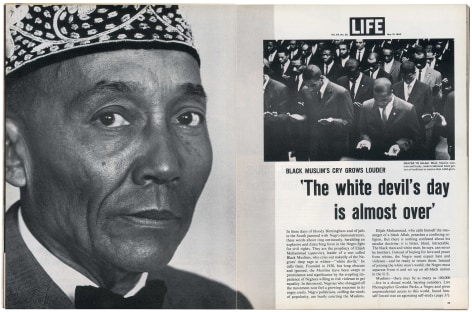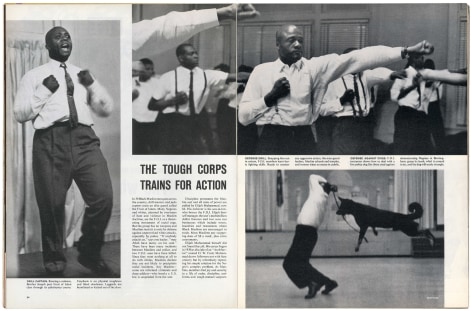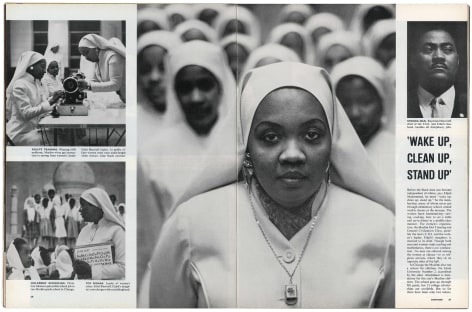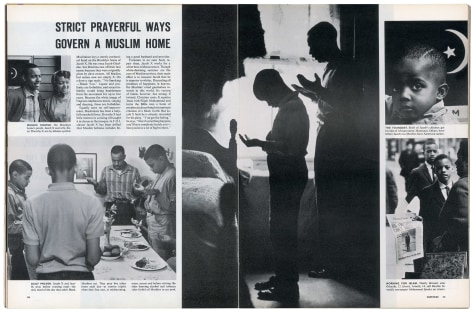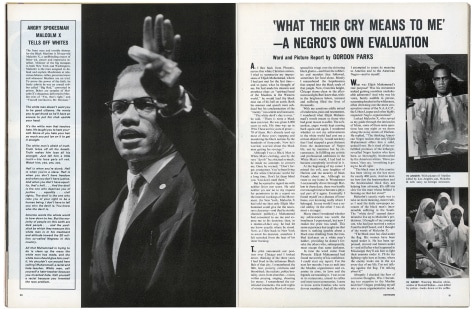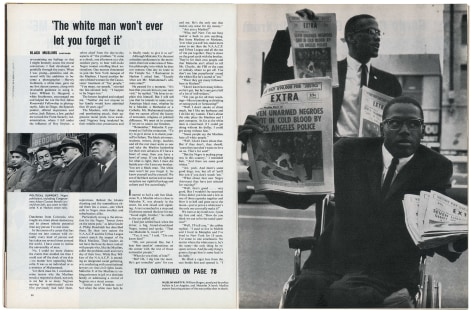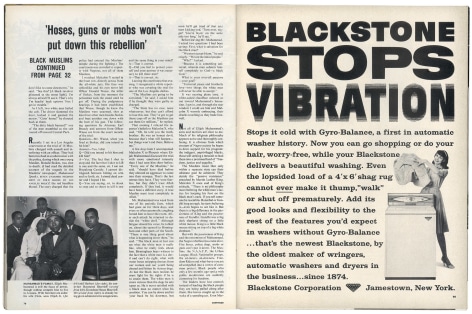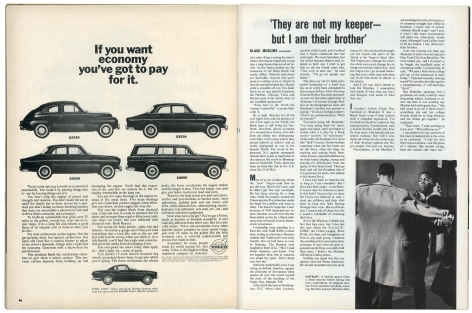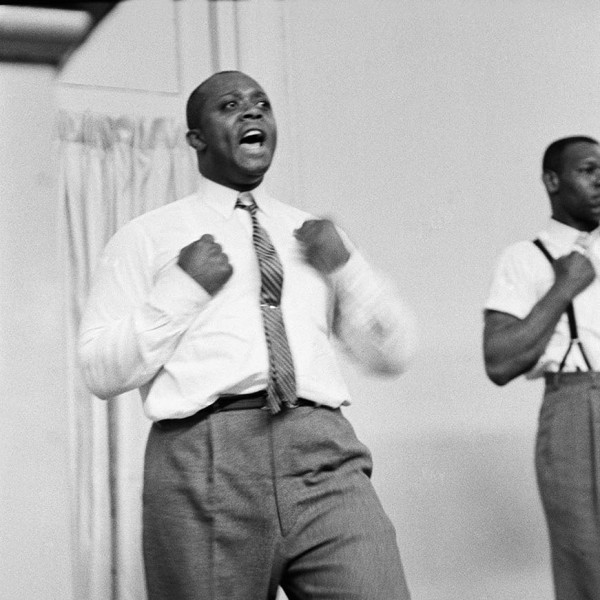
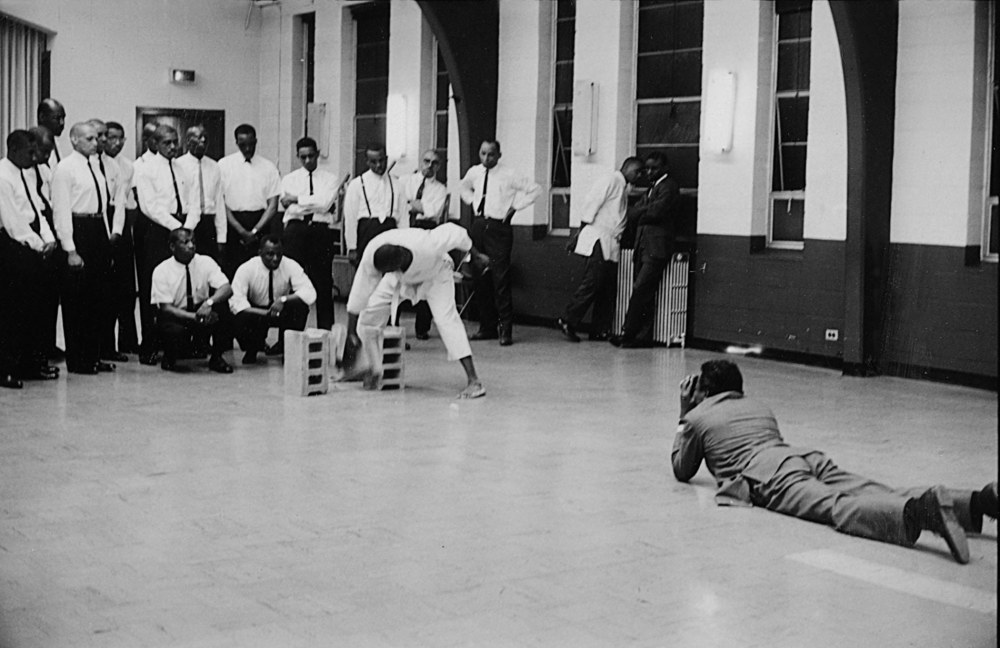
Unknown Photographer, Gordon Parks with Black Muslims, Chicago, Illinois, 1963
In the early 1960s, as the civil rights movement accelerated, Life sought to gain access to the increasingly bellicose Black Muslim movement. When several white reporters were rebuffed in their requests for an audience with the group’s leaders, Parks—the only Black member of the magazine staff—was asked to try.
His first contact was with perhaps the most renowned and tendentious member of the group, Malcolm X. After hearing a fiery speech in Harlem, Parks introduced himself, only to find that the charismatic minister already knew who he was. He invited Parks to a special meeting with Elijah Muhammad, who had been the spiritual leader of the Nation of Islam for nearly 30 years, to discuss the possibility of a story in Life. The slight and gentle-looking Muhammad asked Parks sternly: “Why does a bright young man like you work for the white devils?” Malcolm X later told Parks, grinning, “I think he likes you” (Half Past Autumn, 1997).
Muhammad ultimately agreed to the article, which became one of Parks’s groundbreaking pieces. He documented virtually every aspect of the Black Muslim community, in a full spectrum of images ranging from children and families at prayer to grown men exercising their physical strength in self-defense drills. In addition to piercing portraits of Malcolm X and Elijah Muhammad, the story featured one of Parks’s masterpieces: a photograph of Muslim Sister Ethel Sharrieff in Chicago. She stares resolutely, with an almost disconcerting calm, into the camera as her sisters in a V-shaped column fall out of focus behind her. Especially impressive is the contrast between their dark skin and their white clothing and veils.
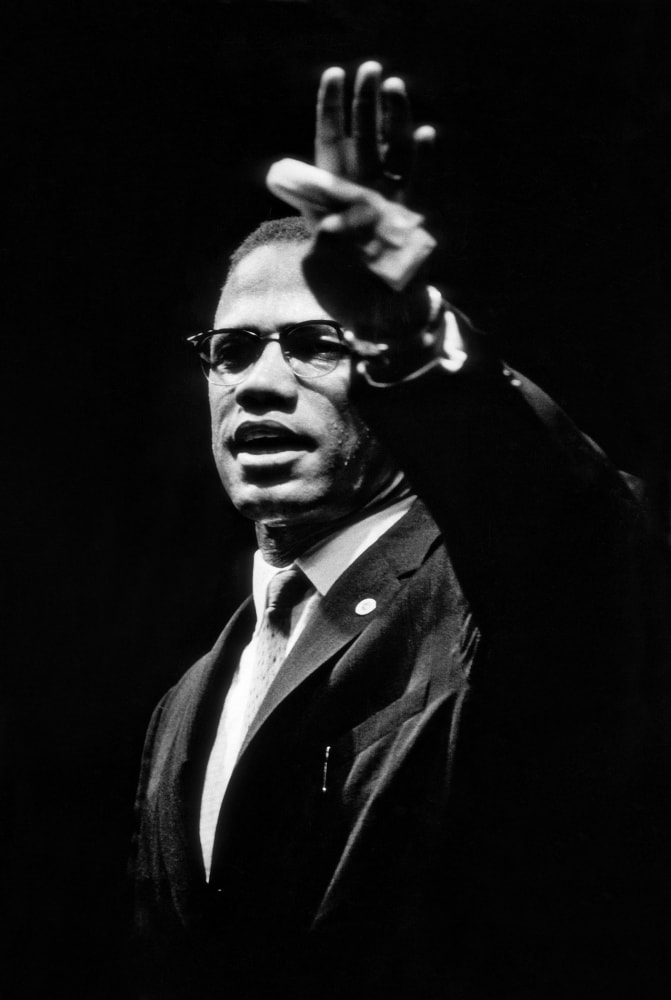
Malcolm X at Rally, Chicago, Illinois, 1963
As powerful as these images are, perhaps the most poignant aspect of the article is Parks’ disarming and personal writing, which made it clear that, for him, race relations in this country could not be so easily split between Black and white. After considering the positive and the negative aspects of the Black Muslim movement, he ends by stating plainly that although he appreciated the historical suffering that was motivating Black Muslims, he could not join their cause or support their divisive political and cultural goals.
The movement itself had difficulty following those goals. Within the year, Malcolm X was ostracized by the Nation of Islam, ostensibly for his comments about President John F. Kennedy’s assassination but also as part of a power struggle within the movement. When Malcolm then attempted to establish more mainstream religious organizations—such as Muslim Mosque, Inc.—the Nation turned on him viciously; this escalated into the eviction of his family from their home, and ultimately to his assassination, on February 21, 1965.
Black Muslims Rally, Harlem, New York, 1963
Black Muslim Women, Chicago, Illinois, 1963
Untitled, Chicago, Illinois, 1963
Untitled, Chicago, Illinois, 1963
Black Muslims Exercise, Chicago, Illinois, 1963
Harlem Rally, Harlem, New York, 1963
Malcolm X Leads Muslims in Prayer, Chicago, Illinois, 1963
Ethel Sharrieff, Chicago, Illinois, 1963
Black Muslims Train in Self-Defense, Chicago, Illinois, 1963
Daily Prayer, Brooklyn, New York, 1963
Newsman Being Frisked at Muslim Rally in Chicago, Chicago, Illinois, 1963
Malcolm X Holding Up Black Muslim Newspaper, Chicago, Illinois, 1963
Malcolm X Gives Speech at Rally, Harlem, New York, 1963

